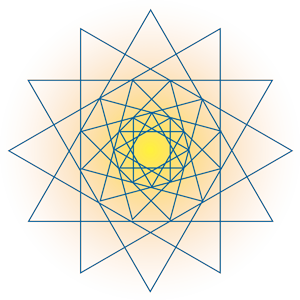The Science of Visualisation - September 2017
One of the foundational techniques for the practise and performance of meditation is the capacity to visualise. For some people, visualisation comes easily; for others it seems to require real effort, which can be a discouraging experience. But there is no need to be disheartened, as everyone has to learn to meditate and visualise in their own unique way.
For some, visualisation involves the picture making faculty. Here the detail and intensity of the specific thing being visualised compounds into a living thoughtform that scintillates with the shape and colour of the imagined idea. For others it is a much more mental process of working with ideas. There is of course the same level of intensity, but instead of images a concentration on the meaning of what is being thought about gives it its life and purpose.
Whichever method we use, our beginning attempts are usually amateurish, fall wide of the mark and are ineffectual. But with practise we find that what we visualise approaches ever nearer the reality of an aspect of the Plan that is already existing in the abstract realms. This can only really be achieved by going beyond the more emotional and mystical styles of meditation and learning to focus in the mind where the power of thought, motivated by love, comes into its own. This is where the crucial point comes, for if meditators can synchronise their work on the mental plane with the already existing abstract prototype, then an immediate vivification occurs and their meditation efforts assume a loving power that can truly serve humanity and our planet.
It is clear why these ideas are so important to the global service of triangles. This daily work behind the scenes is transforming the inner climate of thought and emotion so that gradually, very gradually, the old adversarial habits of a humanity once stuck in the conflict mode are being superseded by the recognition that cooperation and the striving towards harmony at every level – international, national and personal – is the only possible way forward to a future that will be good for the planet and humanity. Of course this process does not embody a smooth trajectory, but, as is all too obvious, forges a path that is beset with obstacles and setbacks as well as wonderful leaps forward.
Perhaps this is why visualisation is called a science, for it is a testable enterprise. We can find out what works and what doesn’t. When we have found our technique and honed it into a useable skill, then we can become a conscious and efficient part of the global Triangles meditating group, helping to build a world based on the ever living vision of love, of right relationships and of service.
